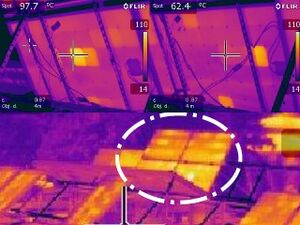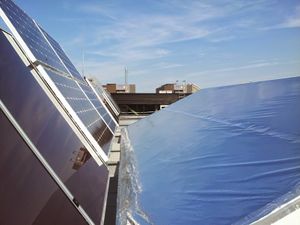
Non-tracking planar concentrators are a low-cost method of increasing the performance of traditional solar photovoltaic (PV) systems. In this study such an outdoor system has been shown to improve energy yield by 45% for a traditional flat glass module and by 35% for a prismatic glass crystalline silicon module. In addition, this paper presents new methodologies for properly modelling this type of system design and experimental results using a bi-directional reflectance function (BDRF) of non-ideal surfaces rather than traditional geometric optics. This methodology allows for the evaluation and eventual optimization of specular and non-specular reflectors in planar concentration systems.
keywords: Glass;Mathematical model;Predictive models;Radiation effects;Temperature measurement;BDRF;booster mirrors;crystal silicon;low concentration;optics;planar concentrator;reflectors
See also[edit | edit source]

- Photovoltaic System Performance Enhancement With Non-Tracking Planar Concentrators: Experimental Results and Bi-Directional Reflectance Function (BDRF) Based Modelling
- Effects of low concentration planer concentrators on array-scale solar photovoltaic systems performance
- Low level concentration for PV applications
- Geographic potential of shotcrete photovoltaic racking: Direct and low-concentration cases





